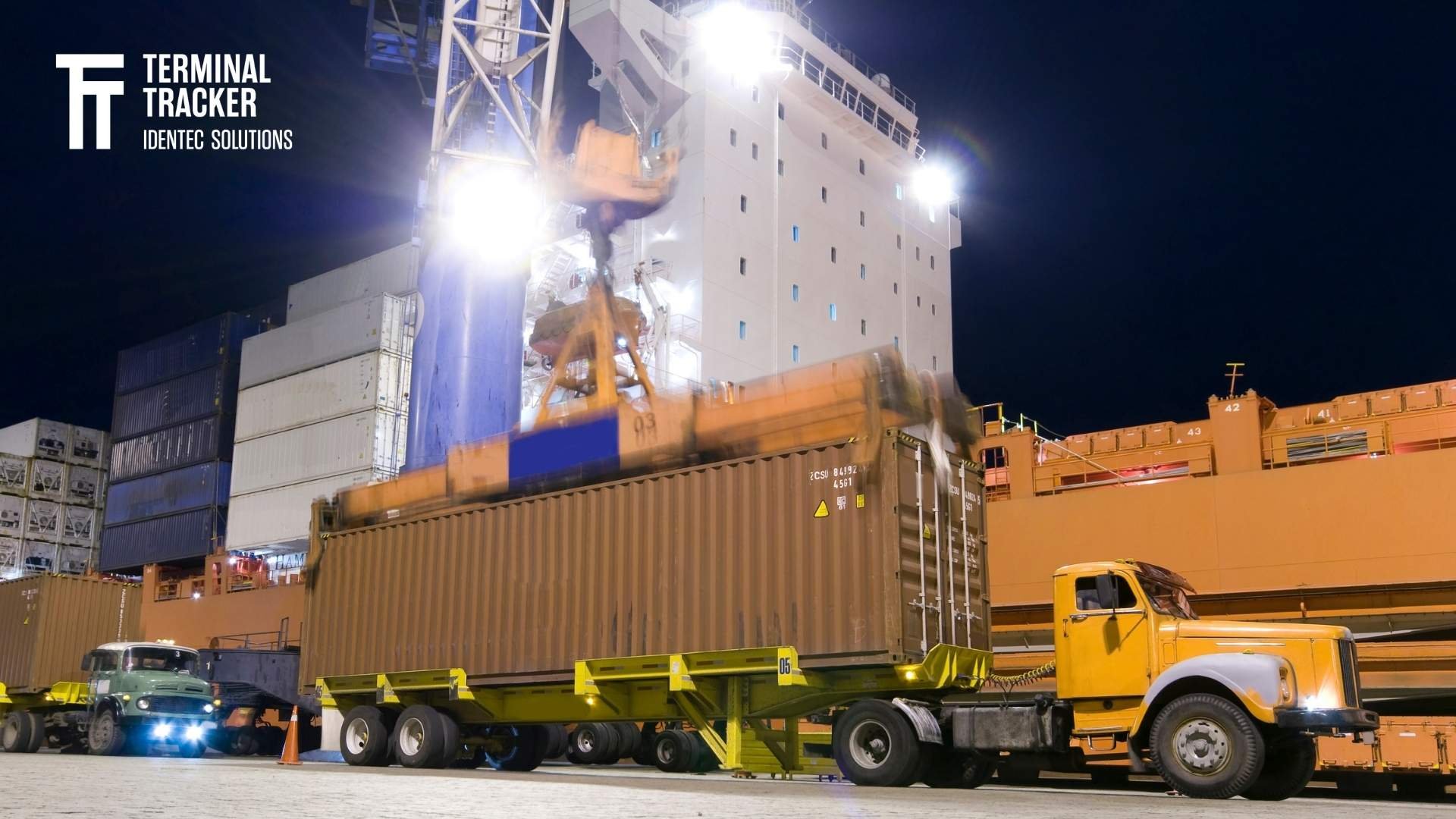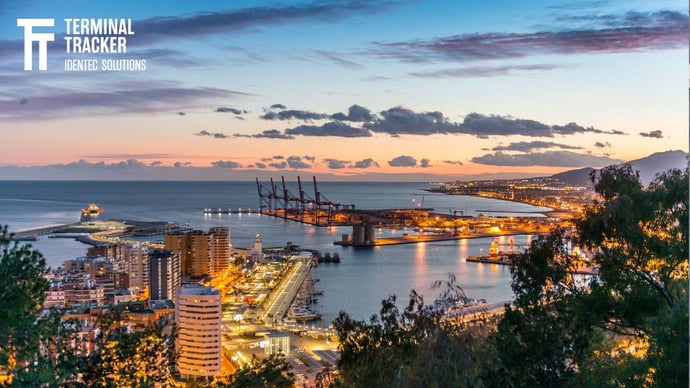Container Terminal: What is operations planning?
| Written by Mark Buzinkay

No video selected
Select a video type in the sidebar.
CONTAINER TERMINALS AND OPERATIONS
Most people don't think about the process of getting their goods from the other side of the world. But a complex network of transportation and logistics makes it all possible. Container terminals are a vital part of this network, and operations planning is essential to ensure they run smoothly. This blog post will discuss operations planning and how it impacts container terminals. We will also look at some challenges planners face and explore solutions to common problems. If you're interested in container terminal safety, continue reading here.
Today, the container terminal is an essential piece of infrastructure for global supply chains. A vital function of the container terminal is to connect maritime transport and other modes of transportation, such as road or rail. The role of the container terminal has become increasingly important as globalization has led to more international trade.
A key challenge for terminals is meeting the demands of different stakeholders while still being efficient and profitable. Stakeholders include shipowners, shipping lines, freight forwarders, importers, exporters, shippers, port workers, and government agencies. Each stakeholder has its objectives and priorities, which can conflict with each other. For example, shipowners may want to minimize their time in port to save on costs, while freight forwarders may want to maximize the amount of time their containers spend in the terminal to reduce storage costs.
Further reading: Improving container terminal operations

OPERATIONS PLANNING IN A NUTSHELL
Operations planning is creating a plan outlining how the terminal will be used to store and move containers. The Operations Planner will consider the type and size of containers, the layout of the terminal, the available equipment, and the flow of traffic in and out of the terminal. Once the Operations Planner has created a plan, they will share it with the terminal staff and other stakeholders to ensure everyone is on the same page. By creating a well-thought-out Operations Plan, container terminals can run more efficiently and prevent delays.
Operations planners coordinate and control all container terminal activities to achieve efficient and effective operations. It is a vital part of any business, but it can be especially challenging in a container terminal with many moving parts. For example, operations planners must take into account the movements of ships, trucks, and cranes, as well as the comings and goings of container cargo. To complicate matters further, they must also ensure that the terminal can meet its customers' demands. This can be a tricky balancing act, but it is essential for the smooth running of the terminal.
Operations planning at a container terminal typically involves coordinating the movement of six key elements: berths, quay cranes, vessels, stowage (i.e. the placement of containers on the vessel), yard cranes, and yard transportation.
Berth allocation is the process of determining which vessel will use which berth and for how long. The decision is based on a number of factors, including the vessel's size, draft, and cargo type.
Quay crane assignment is the process of allocating quay cranes to vessels. The number of quay cranes needed depends on the size of the vessel and the crane's lifting capacity.
Quay crane scheduling is the process of determining when each quay crane will be used. The schedule must take into account the time needed to load and unload the vessel and any maintenance or repair needs.
Stowage planning is the process of determining how containers will be placed on the vessel. The goal is to optimize the use of space and ensure that the vessel is adequately balanced.
Yard management is the process of coordinating the movement of containers within the terminal's yard. This includes deciding where to place each container and how to move it between different locations.
Yard crane scheduling is the process of determining when each yard crane will be used. The schedule must take into account the time needed to load and unload containers and any maintenance or repair needs.
Finally, yard transportation is responsible for moving containers around the terminal yard. This includes using trucks, trains, or other vehicles to transport containers from one location to another.
Interested in sustainability and the supply chain?

OPERATIONS PLANNING: BRING IT ALL TOGETHER
Besides the above-mentioned elements, workforce planning is a critical part of operations planning for any business. It is imperative in the container terminal industry. This is because the workforce is responsible for handling the physical movement of containers, which are the lifeblood of the business. In order to ensure that containers are moved efficiently and effectively, it is essential to have the correct number of workers with the right skill set in place. This can be a challenge, as the workforce must adapt to changes in demand and fluctuating workloads 24/7. However, with a well-designed workforce planning strategy, container terminals can ensure they have the right people to meet their operational needs (learn more about container terminal automation).
Service quality reliability is one of the most critical aspects of the container shipping business. Reliability means to load or unload a vessel within its projected service time interval. Therefore, it directly influences the reliability of vessels in meeting their liner schedules. According to Notteboom (2006: The time factor in liner shipping services. Maritime Economics and Logistics, 8, 19-39), unexpected waiting times of vessels before berthing and unexpected low transhipment productivity at terminals are responsible for about 86% of liner schedule disruptions. Therefore, service reliability is one of the most important things to consider when looking for a container terminal. Make sure that the terminal you choose has a high level of service quality reliability so that your vessel can meet its liner schedule without disruptions.
Further reading: Unreported container damage
There are many challenges that Operations Planners face when creating an Operations Plan. One challenge is predicting demand. The amount of cargo that moves through a terminal can fluctuate greatly depending on the time of year, the country's political situation, and the health of the economy. Another challenge is dealing with disruptions. Disruption can be anything from bad weather to a strike by port workers. Therefore, planners must have a contingency plan in place to deal with disruptions to keep the terminal running as smoothly as possible.
Why is real-time monitoring essential for operations planning?
A vital aspect of operations is how to deal with deviations and exceptions. For some that occur frequently, separate processes can be set up so that, strictly speaking, they are no longer exceptions. Other situations cannot be pressed into a regulated form because they do not occur frequently enough or always in different ways. What helps here is real-time monitoring. Only those who know important information, such as the location of containers and container handling equipment (CHE) and employees can make quick and efficient decisions.
Let's take the example of dropping off a container at a location other than the assigned slot in the yard. Here, virtual slots can be used, which function for the system in the same way as conventional slots - but give the team enough flexibility to react quickly to an exceptional situation.
Or let's think about equipment failures. Despite precise adherence to maintenance cycles, malfunctions occur again and again. Anyone who uses real-time monitoring here is usually one step ahead of the failure. Various indicators, such as the level of different liquids, can predict a likely incident. Fortunately, this then does not occur because something can be done about the problem quickly enough.
TAKEAWAY
Container terminal reliability is the essential ingredient of a thriving port. But a terminal is faced with a complex set of variables that influence the outcome of everyday operation. Operational planning is a process that systematically takes all aspects of terminal assets into account and creates the most feasible and efficient plan to manage discharging and loading ships.
If you're interested in learning more about container terminal planning or container terminals in general, check out our whitepapers or give us a call today! We would be happy to answer any of your questions.
Research our extensive resources about port automation here...
Sources:
(1) UNCTAD Handbook of Statistics 2021
Note: This article was updated on the 8th of May 2024

Author
Mark Buzinkay, Head of Marketing
Mark Buzinkay holds a PhD in Virtual Anthropology, a Master in Business Administration (Telecommunications Mgmt), a Master of Science in Information Management and a Master of Arts in History, Sociology and Philosophy. Mark spent most of his professional career developing and creating business ideas - from a marketing, organisational and process point of view. He is fascinated by the digital transformation of industries, especially manufacturing and logistics. Mark writes mainly about Industry 4.0, maritime logistics, process and change management, innovations onshore and offshore, and the digital transformation in general.




